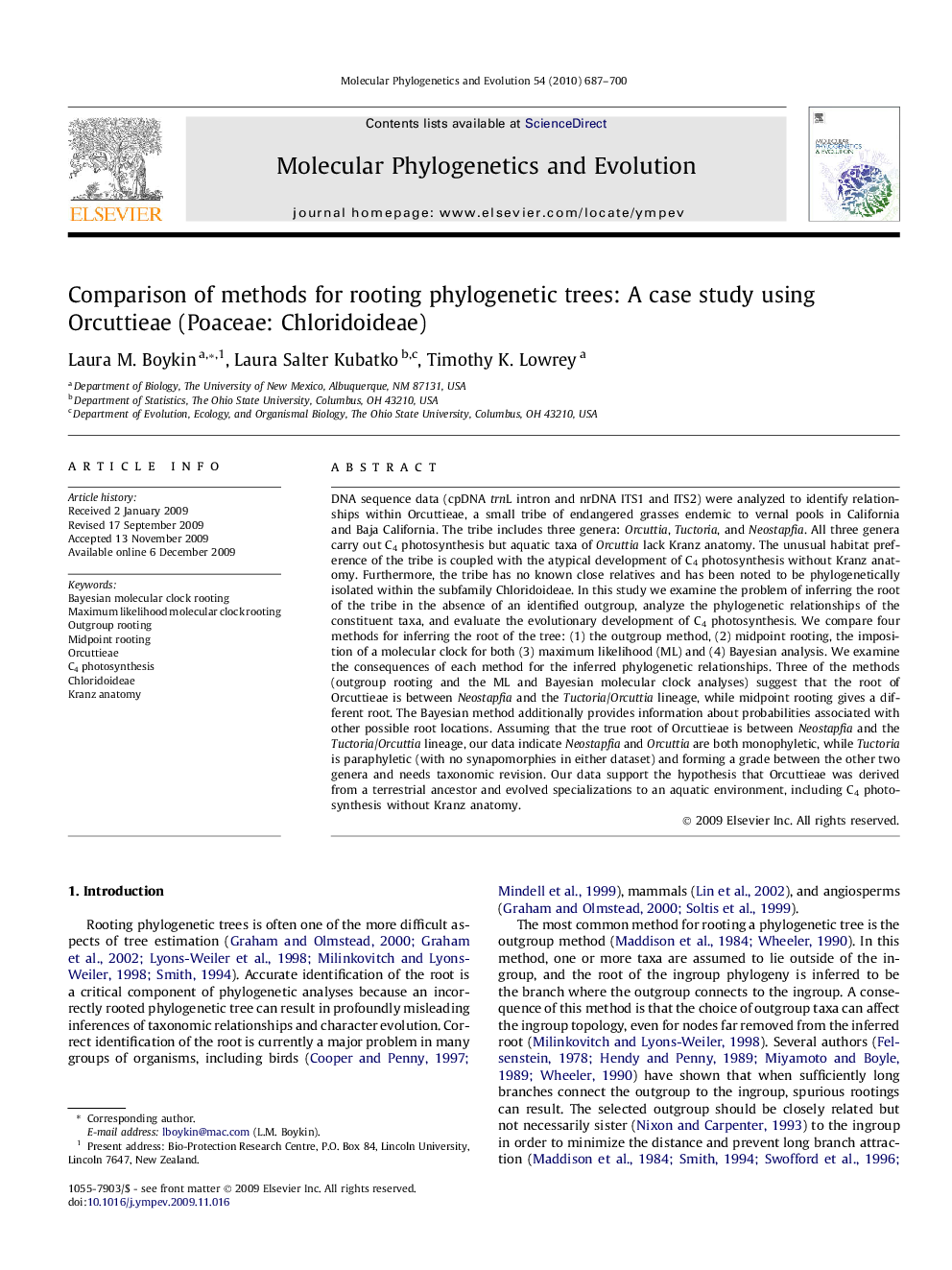| کد مقاله | کد نشریه | سال انتشار | مقاله انگلیسی | نسخه تمام متن |
|---|---|---|---|---|
| 2834862 | 1164325 | 2010 | 14 صفحه PDF | دانلود رایگان |

DNA sequence data (cpDNA trnL intron and nrDNA ITS1 and ITS2) were analyzed to identify relationships within Orcuttieae, a small tribe of endangered grasses endemic to vernal pools in California and Baja California. The tribe includes three genera: Orcuttia, Tuctoria, and Neostapfia. All three genera carry out C4 photosynthesis but aquatic taxa of Orcuttia lack Kranz anatomy. The unusual habitat preference of the tribe is coupled with the atypical development of C4 photosynthesis without Kranz anatomy. Furthermore, the tribe has no known close relatives and has been noted to be phylogenetically isolated within the subfamily Chloridoideae. In this study we examine the problem of inferring the root of the tribe in the absence of an identified outgroup, analyze the phylogenetic relationships of the constituent taxa, and evaluate the evolutionary development of C4 photosynthesis. We compare four methods for inferring the root of the tree: (1) the outgroup method, (2) midpoint rooting, the imposition of a molecular clock for both (3) maximum likelihood (ML) and (4) Bayesian analysis. We examine the consequences of each method for the inferred phylogenetic relationships. Three of the methods (outgroup rooting and the ML and Bayesian molecular clock analyses) suggest that the root of Orcuttieae is between Neostapfia and the Tuctoria/Orcuttia lineage, while midpoint rooting gives a different root. The Bayesian method additionally provides information about probabilities associated with other possible root locations. Assuming that the true root of Orcuttieae is between Neostapfia and the Tuctoria/Orcuttia lineage, our data indicate Neostapfia and Orcuttia are both monophyletic, while Tuctoria is paraphyletic (with no synapomorphies in either dataset) and forming a grade between the other two genera and needs taxonomic revision. Our data support the hypothesis that Orcuttieae was derived from a terrestrial ancestor and evolved specializations to an aquatic environment, including C4 photosynthesis without Kranz anatomy.
Journal: Molecular Phylogenetics and Evolution - Volume 54, Issue 3, March 2010, Pages 687–700